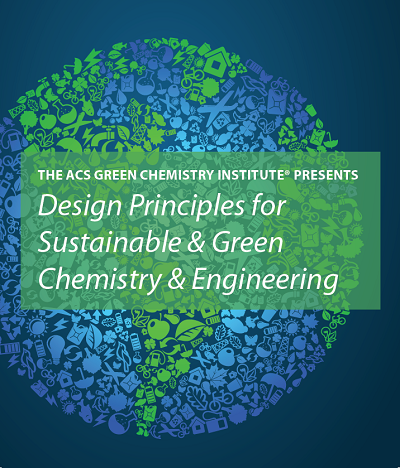Design Principles Booklet
Design Principles for Sustainable and Green Chemistry and Engineering Booklet
Over the years, many design principles of green chemistry and engineering have been proposed. This booklet organizes these principles in a visually compelling format. The principles fall into one of three overarching buckets.
1. Maximize Resource Efficiency
Minimizing waste in a chemical reaction of process may include strategies to reduce energy use, increase the mass of raw materials incorporated into a final product (atom economy), recover and reuse of solvents and reagents, and reduction of process time.
2. Eliminate & Minimize Hazards & Pollution
Safer chemistry can be achieved through smarter design. It is critical that chemists work to understand toxicity and remove hazardous chemicals from reactions when possible. Other approaches include real-time analysis of processes and monitoring and minimizing laboratory waste.
3. Design Systems Holistically & Using Life Cycle Thinking
Sustainable design demands looking at chemistry and engineering from a systems perspective and considering the overall impact of processes and products. Considering the end-of-life of a product in the design phase will help efforts to recycle, reuse, compost or otherwise dispose properly of products. Use of renewable materials and the ability to separate materials at end of life are key considerations.
ACS GCI's Green Chemistry and Engineering Conference
The 28th Annual Green Chemistry & Engineering Conference will be held June 2-5, 2024 in Atlanta, Georgia, with the theme AI-Generated Green Chemistry.


